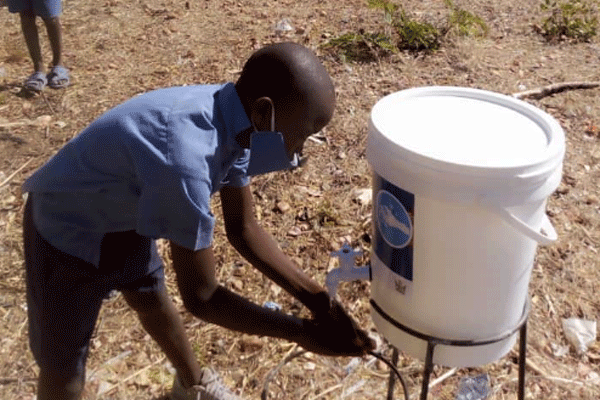
WATER availability in the country during the COVID-19 period remains a big challenge with Harare producing 258 megalitres (ML) per day when 1 200ML is required.
BY VENERANDA LANGA
The shortage of water has forced women to the fetch precious liquid from boreholes where social distancing is difficult to observe, increasing the risk of contracting COVID-19. This was revealed yesterday by national co-ordinator for Community Water Alliance, Hardlife Mudzingwa during a virtual water indaba organised by the Women’s Coalition of Zimbabwe (WCoZ) and the Women in Politics Support Unit (WIPSU).
Discussion moderator Cynthia Chirinda said the indaba was meant to deliberate on water issues in Zimbabwe, the involvement of women in water policy formulation and the impact of water provision on marginalised groups during the COVID-19 era.
“In Zimbabwe and Africa, the duties of fetching water are confined to women and so the burden is on women, but we have the Zinwa Act which stipulates that there is need for water funds to address issues of access to water, but it has taken a long time before those funds are availed to solve the water crisis,” Mudzingwa said.
“The challenge is that, since independence, the national budget allocations for water have been a paltry 1,2% and it is difficult for citizens to have access to clean potable water, resulting in gaps in water and sanitation in terms of quantity versus demand.”
Mudzingwa said, in Harare, the demand for water was 1 200ML per day yet the city was producing 258ML per day, which also acters for Chitungwiza and Ruwa, leaving a huge deficit. He said Chitungwiza gets 42ML per day when the demand is 76ML and Masvingo produces 24ML per day when the demand is 56ML per day adding that Bulawayo is actually in a state of disaster when it comes to water access.
He said the quality of water in the country did not meet World Health Organisation standards, adding that there was need for a gendered water provision framework. “The gendered framework should state, for example, that lactating women need more water than men. There is also need for an infrastructure friendly water framework for people with disabilities,” Mudzingwa said.
- Chamisa under fire over US$120K donation
- Mavhunga puts DeMbare into Chibuku quarterfinals
- Pension funds bet on Cabora Bassa oilfields
- Councils defy govt fire tender directive
Keep Reading
Regional gender and water expert Rennie Munyayi said the United Nations recently produced statistics that showed that women were spending 40 billion hours per year looking for water, which is equivalent to a year worth of labour for the entire labour force of France.
“This affects women in terms of time lost in human development and participating in economic development activities because women spend up to four hours queuing for water. The UN General Assembly also recommends rights to clean, safe, potable water. It speaks to that an individual should get 50 to 100 litres per day and also looks at issues of safety. “We need to ensure that as we provide water, there is need to be sensitive to the gender cycle requirements. Water can transform and empower women. We need to ensure women and girls have access to water for productive purposes. Water is not for drinking and bathing only. We know that when a woman is menstruating, the demand for water is higher because there are implications for a menstruating woman that does not have sufficient water,” Munyayi said.
Participants during the discussion stressed the need for provision of sanitisers at boreholes to prevent contraction COVID-19.











